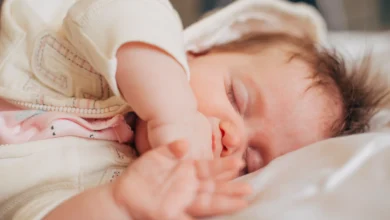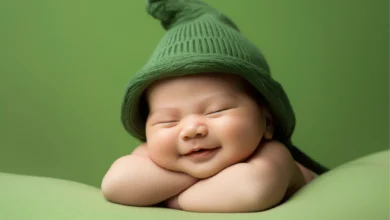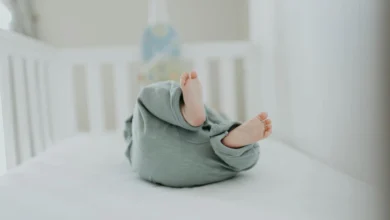Ensuring your newborn has a safe sleep environment is one of the most important things you can do as a parent. Not only does a secure sleeping space help your baby sleep better, but it also significantly reduces the risk of Sudden Infant Death Syndrome (SIDS) and other sleep-related dangers. In this article, we’ll explore the best practices for creating a safe sleep environment for your newborn, so you can sleep soundly knowing your baby is safe.
Table of Contents
Understanding the Importance of a Safe Sleep Environment
A safe sleep environment is essential for your newborn’s well-being. In the first year of life, babies are particularly vulnerable to sleep-related risks, such as SIDS, which is the leading cause of death in infants between 1 month and 1 year of age. While there’s no one definitive cause for SIDS, research shows that placing your baby in a safe sleeping space greatly reduces these risks.
Not only does a secure sleep setting provide peace of mind for parents, but it also supports your baby’s healthy development. Creating an environment that promotes restful and safe sleep is a crucial part of early parenthood.

Guidelines for Creating a Safe Sleep Environment
When setting up your baby’s sleep space, keep these key guidelines in mind:
1. Always Lay Your Baby on Their Back
One of the most important practices to prevent SIDS is ensuring your baby sleeps on their back, every time. Studies have shown that back-sleeping significantly reduces the risk of SIDS compared to side or stomach sleeping. Even if your baby rolls over naturally during sleep, continue placing them on their back at the beginning of each sleep session.
2. Use a Firm, Flat Mattress
Your baby’s mattress should be firm, flat, and fit snugly within the crib. Avoid soft surfaces such as soft mattresses, pillows, or plush bedding, as these can cause suffocation. The mattress should be covered with a fitted sheet that doesn’t move or bunch up.
3. Keep the Crib Free from Soft Objects
In addition to avoiding soft mattresses, keep the crib free from pillows, blankets, stuffed animals, or bumpers. These objects can create a suffocation hazard, and babies may become entangled in them. Instead of using loose blankets, consider using a wearable blanket or a sleep sack to keep your baby warm.
4. Maintain a Comfortable Room Temperature
Your baby’s sleep environment should be comfortable, neither too hot nor too cold. Keep the room at a moderate temperature (between 68-72°F or 20-22°C) and dress your baby in appropriate sleepwear to prevent overheating. Avoid using heavy blankets or quilts, which can cause your baby to become too warm during sleep.
Ideal Crib Setup for Newborns
A crib is the safest place for your baby to sleep. Here’s what you need to know to ensure it’s properly set up:
- Crib: Ensure your crib meets current safety standards and is free from any loose or removable parts.
- Mattress: Use a firm, flat mattress that fits snugly into the crib, with no gaps around the edges.
- Sleep Space: The crib should be free from any soft bedding, pillows, toys, or bumpers, as these pose a suffocation hazard.
Make sure the crib is positioned away from windows, cords, or other potential hazards like curtains or blinds.
Room Sharing vs. Co-Sleeping: What’s Best for Your Baby?
While it’s important to have your baby sleep in their own crib, room-sharing with your baby for the first six months can provide additional reassurance. Room-sharing means placing the baby’s crib or bassinet in the same room as you, but not in the same bed. This practice makes nighttime feedings easier and provides peace of mind, as you can monitor your baby’s sleep.
However, co-sleeping (sleeping in the same bed with your baby) can be dangerous. The risks include accidental suffocation, overheating, and falls. To ensure safety, always place your baby in their own sleep space, even if it’s close to your bed.
Use of Sleep Aids (e.g., Swaddling and White Noise)
Swaddling Safely
Swaddling can be a great way to help your newborn feel secure and calm during sleep, but it’s essential to do it safely. Swaddle your baby snugly but ensure their hips have room to move to prevent hip dysplasia. Never swaddle your baby too tightly, as it can interfere with their breathing and movement.
White Noise
Many parents find that white noise machines help create a soothing environment for their baby. White noise can help drown out household sounds, making it easier for your baby to fall and stay asleep. However, make sure the noise is not too loud (keep it at or below 50 decibels), and place the machine away from the crib.
Regular Sleep Safety Checks: What You Need to Monitor
Even with a perfectly set up sleep environment, it’s important to regularly check on your baby during sleep. Make sure they are lying on their back, in the center of the crib, with no soft objects around them. Check for signs of overheating by feeling their neck or back—your baby’s skin should feel warm but not hot.
If you’re concerned about your baby’s breathing or sleep, some parents use baby monitors with movement or breathing sensors, although it’s important to remember these tools don’t eliminate the need for proper sleep safety practices.
Common Mistakes Parents Make in Baby Sleep Safety
Even the most well-meaning parents can make mistakes in setting up their baby’s sleep space. Here are some common pitfalls to avoid:
- Incorrect Sleep Position: Never place your baby on their stomach or side to sleep.
- Using Soft Bedding: Avoid putting pillows, blankets, or stuffed toys in your baby’s crib.
- Co-Sleeping: Resist the urge to co-sleep in the same bed as your baby; always have them sleep in their own crib or bassinet.
FAQs (Frequently Asked Questions)
Can I use a pillow or blanket for my newborn?
No, pillows and blankets pose a suffocation risk. Use a sleep sack or wearable blanket instead.
What is the safest sleep position for my baby?
Always place your baby on their back for every sleep session.
Is it safe for my baby to sleep in the same bed as me?
It’s safer for your baby to sleep in their own crib or bassinet in the same room as you, rather than in your bed.
How can I prevent my baby from getting too hot during sleep?
Dress your baby in lightweight clothing and use a breathable sheet to help regulate body temperature. Keep the room at a comfortable temperature.
Conclusion
Creating a safe sleep environment for your newborn is one of the most important steps in ensuring their health and safety. By following the guidelines outlined above—keeping the crib clear of soft objects, ensuring a firm mattress, room-sharing instead of co-sleeping, and maintaining the right room temperature—you’ll help reduce the risks associated with infant sleep. Your baby’s sleep is essential for their growth and development, so ensuring their safety is paramount.
If you found these tips helpful, share this article with other parents, and feel free to leave a comment or ask any questions about baby sleep safety.


